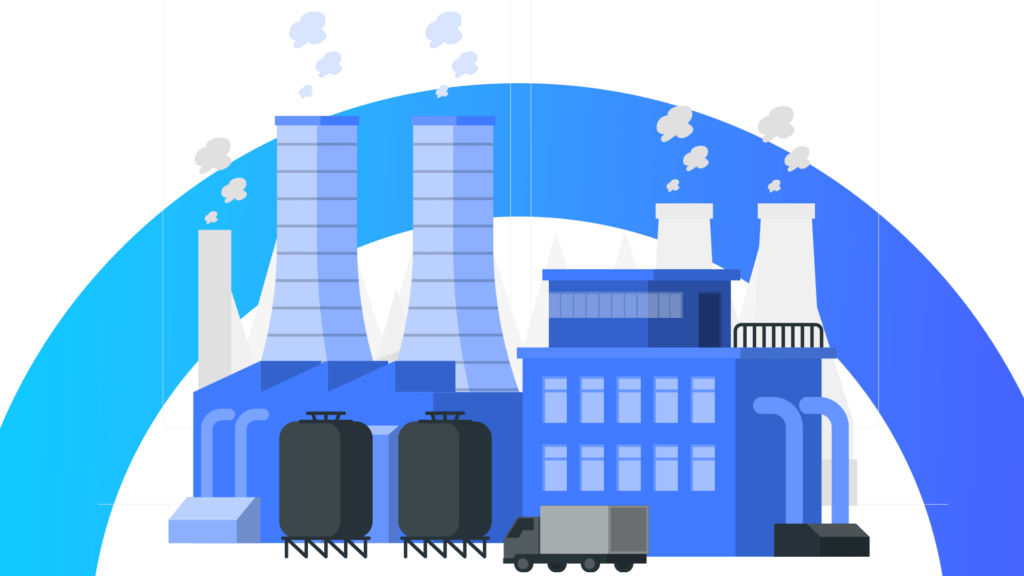A strong digital transformation strategy helps oil and gas companies cut complexity, boost performance, and future-proof operations, without disrupting what works.
Introduction
Oil and gas operations run on complex systems, interconnected assets, aging infrastructure, remote environments, and strict safety requirements. Optimizing these systems at scale demands more than isolated technology deployments. It requires a coordinated, data-driven architecture that aligns operational goals with digital capabilities.
This is the function of a digital transformation strategy. It provides a structured approach to modernizing core processes, integrating real-time data flows, and enabling advanced analytics across the value chain. In industries like oil and gas, where downtime is costly and precision is critical, such a strategy becomes foundational, not optional.
Defining what a digital transformation strategy really means

A digital transformation strategy isn’t just about technology upgrades. It’s about using digital tools to rethink how value is delivered, and how organizations respond to change.
At its core, it’s a structured plan to evolve operations by aligning data, processes, and people through digital innovation. This approach needs to be grounded in business goals, not just built around tools for the sake of modernity. There is no one-size-fits-all version.
In oil and gas, digital transformation must account for scale, legacy systems, safety, and complex workflows. The strategy should respect those realities while paving the way forward.
Why oil and gas can’t afford to wait
Oil and gas companies are no strangers to risk. Yet the current set of challenges, such as fluctuating prices, decarbonization pressures, workforce shifts, require more than operational tweaks. They demand systemic change. Digital transformation provides a pathway to navigate these shifts. Whether it’s enabling remote operations, managing environmental performance, or improving field reliability, digital strategies unlock new levels of control and insight.
But transformation can’t happen through technology alone. It must be a business-wide movement, with clear purpose and leadership commitment. Otherwise, efforts remain scattered and short-lived.
The value digital can bring to the field
When done thoughtfully, digital transformation in oil and gas offers real, measurable benefits. Here’s where the strategy pays off:
1. More efficient operations
Automation and real-time data reduce downtime and help field teams focus on high-value tasks.
2. Improved decision-making
Leaders gain access to more accurate, timely data- supporting smarter, faster decisions.
3. Stronger safety outcomes
Sensors, analytics, and digital workflows improve visibility and reduce risk on the ground.
4. Environmental impact
Better tracking of emissions and asset performance supports sustainability goals and compliance efforts.
5. Cost savings
Predictive maintenance and smarter logistics cut unnecessary spend and avoid costly surprises.
None of this happens overnight. But each gain builds momentum, turning digital from a buzzword into a business advantage.
Barriers that still slow progress
Despite the potential, many oil and gas firms struggle to make digital transformation stick. And the challenges are real:
- Legacy infrastructure makes integration difficult.
- Data silos block visibility across the value chain.
- Cultural resistance can hold back adoption.
- Cybersecurity risks increase as systems become more connected.
These aren’t quick fixes. They require patience, planning, and a willingness to challenge old ways of working. A digital transformation strategy must address both technical and cultural roadblocks, or risk falling flat.
Building a strategy that works in the real world
A successful digital transformation strategy in oil and gas doesn’t start with tools. It starts with intent. The most effective strategies focus less on technology for its own sake and more on solving actual, daily problems. These are those that field teams, engineers, and decision-makers encounter all the time.
The approach needs to be both ambitious and grounded. Here’s what makes that possible:
- Clear alignment with business priorities
Every digital initiative should map back to operational goals, whether it’s increasing uptime, reducing emissions, or cutting cost. - Executive engagement and support
Transformation efforts stall without visible, ongoing leadership involvement. - A practical, phased rollout
Real change happens step-by-step. Small wins help build confidence and reveal what works best on the ground. - People at the center
Tools must support those doing the work. If platforms aren’t intuitive or useful, adoption suffers, no matter how advanced the tech. - Interoperability and data accessibility
The strategy must address the challenge of fragmented systems. When data flows freely and insights surface quickly, momentum builds.
Solutions that bring clarity to complex operations, without forcing a complete overhaul are often the most valuable. Platforms like OmniConnectTM, for instance, quietly support this shift by bridging legacy systems, simplifying data integration, and making insights more accessible across teams through real-time dashboards.
Designed with industrial realities in mind, OmniConnectTM helps unify fragmented data systems commonly found in oil and gas environments. It connects legacy infrastructure, edge devices, and cloud applications into a single data fabric, without requiring large-scale system replacements. This makes digital implementation feel less like a leap and more like a natural progression. For operational teams, it means less time chasing reports and more time acting on insights. For leadership, it means visibility across assets, performance, and compliance, in real time. And for the organization as a whole, it creates a reliable foundation on which to build a digital transformation strategy that actually works.
When the broader strategy is grounded in business need, supported by leadership, and paired with platforms like OmniConnectTM that understand the complexity of the sector, digital transformation stops being an abstract idea. It becomes a practical advantage.
In closing
Digital transformation isn’t just a trend, it’s a necessary response to the complexity and uncertainty oil and gas companies now face. But it only works with a clear, grounded strategy behind it.
That strategy must blend new technologies with deep industry understanding. It must support people, not replace them. And it must solve real problems, not just chase the latest innovation. Platforms like OmniConnectTM help make that strategy real, bridging the gap between vision and execution, one decision at a time.
To learn more, talk to our experts.




